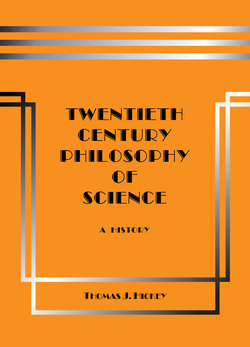Читать книгу Twentieth-Century Philosophy of Science: A History (Third Edition) - Thomas J. Hickey - Страница 40
На сайте Литреса книга снята с продажи.
3.09 Nominalist vs. Conceptualist Semantics
ОглавлениеBoth nominalism and conceptualism are represented in contemporary pragmatism. There are several variations of nominalism, but all contemporary nominalist philosophers advocate a two-level semantics, which in written language consists only of syntactical structures and the ontologies that are referenced by the structures, or as Quine says “word and object”. The two-level semantics is also called a referential theory of semantics, because it excludes any mid-level mental representations variously called ideas, meanings, significations, concepts or propositions. Therefore on the nominalist view language purporting to reference nonexistent fictional entities is semantically nonsignificant, which is to say literally meaningless.
On the alternative three-level view terms symbolize universal meanings, which in turn signify such aspects of extramental reality as attributes, and reference ontologies that include individual entities. When we are exposed to the extramental realities, they are distinguishable by the senses as perceived stimuli, which in turn are synthesized by the brain and registered in memory. The sense stimuli deliver information revealing similarities and differences in reality. The signified attributes are similarities found by perception, and the referenced entities manifesting the attributes are recognized by invariant continuities found in perceived change. The signification is always more or less vague, and the reference is therefore always more or less indeterminate or what Quine calls “inscrutable”. The three-level view is also called a conceptualist thesis of semantics.
The philosophy of nominalism was common among many positivists, although some like the logical positivist Carnap maintained a three-level semantics. In Carnap’s three-level semantics descriptive terms symbolize what he called “intensions”, which are concepts or meanings effectively viewed in simple supposition. The intensions in turn signify attributes and thereby reference in personal supposition what he called “extensions”, which are the individual entities identified by the signified attributes.
While the contemporary pragmatism emerged as a critique of neopositivism, some philosophers carried the positivists’ nominalism into contemporary pragmatism. Pragmatist philosophers such as Quine adopted nominalism. He rejected concepts, ideas, meanings, propositions and all other mentalistic views of knowledge due to the notational conventions of the Russellian predicate calculus, a logic that Quine liked to call “canonical”. However, in his book Word and Object (1960) Quine also uses a phrase “stimulus meaning”, which he defines as a disposition by a native speaker of a language to assent or dissent from a sentence in response to present stimuli. And he added that the stimulus is not just a singular event, but rather is a “universal”, which he called a “repeatable event form”.
Nominalism is by no means essential to or characteristic of contemporary pragmatism, and most contemporary pragmatists such as Hanson, Feyerabend and Kuhn, and most linguists except the behaviorists have opted for the three-level semantics, which is assumed herein. Also, computational philosophers of science such as Simon, Langley and Thagard, who advocate the cognitive-psychology interpretation of discovery systems instead of the linguistic-analysis interpretation, reject both nominalism and behaviorism. Behaviorism is positivism in the behavioral sciences.
Computational philosophers of science recognize the three-level semantics, and furthermore believe that they can model the mental level with computer systems. Thus in his book Mind: Introduction to Cognitive Science Thagard states that the central hypothesis of cognitive science is that the human mind has mental representations analogous to data structures and cognitive processes analogous to algorithms. Cognitive psychologists claim that their computer systems using data structures and algorithms applied to the data structures, can model both the mind’s concepts and its cognitive processes with the concepts.
